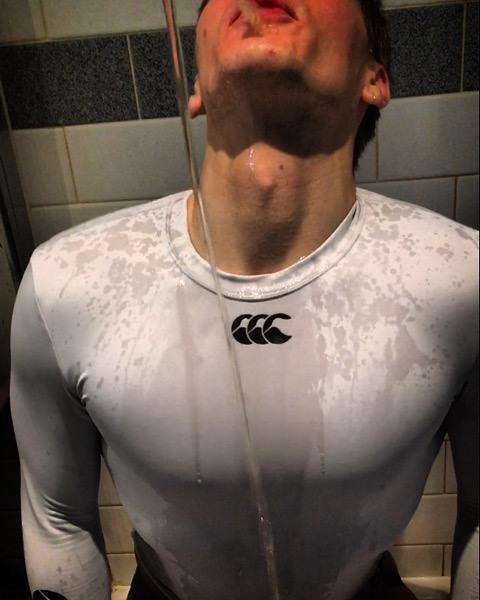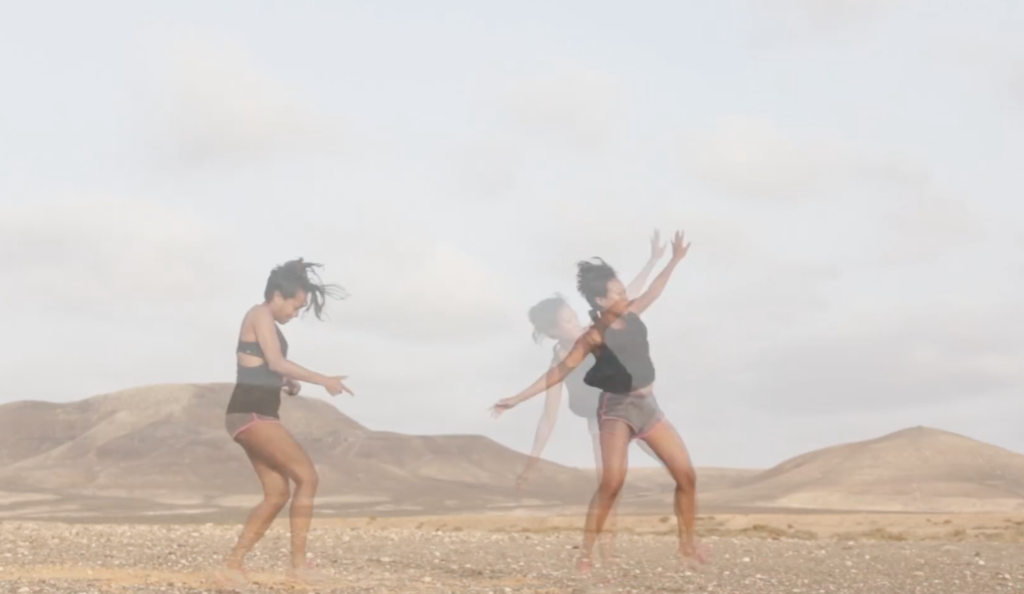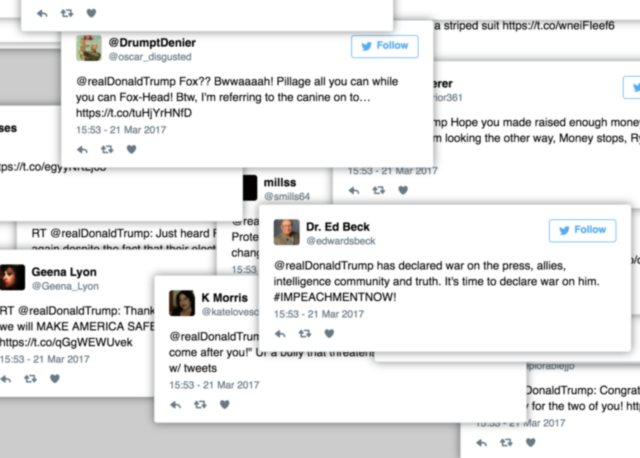“What would be the most efficient and effortless way of facilitating art online?” is a question Cosmos Carl – Platform Parasite asked themselves before their website began in 2014. In a chat over email, artists and co-founders Frederique Pisuisse and Saemundur Thor Helgason explain the motivation behind their interest in “reclaiming (commercial) online platforms.” Through an accumulation of hyperlinks, visitors are re-directed to artists projects that are “parasitically hosted” on the internet elsewhere.

Inhabiting spaces like Google Earth, Airnbnb, Tumblr, Pinterest, eBay and many more, artists are encouraged to make work that could be ‘stumbled upon’ in a variety of spaces online. In this vein, the works have taken on many forms, with recent projects including Chooc Ly Tan‘s ‘Decolonized X Eard Em Say’ (2017) video on Tumblr, Jack Fisher‘s ‘We Are One‘ dropbox link, an Instagram account by Nora Hansen and an intervention on Casting Call Pro by Sophie Hoyle, among many others. Joseph Ridgeon is the newest resident, who presented project ‘DIY Future-Proof Water-sports‘ on March 17.
AQNB spoke with the Cosmos Carl founders about disrupting regular traffic and the potential for hijacking certain platforms in a way that is both ‘lazy & efficient.’ Describing their project as “spreading like a slow virus,” Pissuise and Helgason discuss parasitizing the commercial web and the simultaneous protest and acceptance of the global stage.
** How did the project come about?
Cosmos Carl: We were watching Carl Sagan’s Cosmos: A Personal Voyage at the time, and we got inspired by the way that Sagan would swiftly take his audience to different parts of the cosmos; in a capsule traveling effortlessly through time and space. At the time, online platforms were mainly used as noticeboards pointing toward art offline. The artist website, together with video hosting platforms such as YouTube and Vimeo, were monopolies when it came to displaying art online. Free commercial platforms were popping up like corn in a pot of melting butter, and we saw a potential for hijacking these platforms that were not intended for displaying art. We were excited about the idea of artists incorporating the inherent logic of online platforms not intentionally designed for displaying art.
Our general working ethic was summarized by our ever-changing Facebook slogan ‘lazy & efficient’. We started by commissioning artists to produce a work based upon our framework, but more recently artists approach us with ideas of works that already incorporate this logic. Since our first launch in October 2014, featuring a work by the Icelandic artist Styrmir Örn Guðmundsson, we have released a new link every other Friday.

** Do you have a curatorial aim ? Are you trying to collate anything in particular, or archive ?
CC: We do not really consider what we do curating. We simply invite artists and curators whom we think are able to respond interestingly to, and produce a work based on, the framework of Cosmos Carl. That is, the work being hosted on an existing platform with its regular traffic and community. We like to think of the accumulation of links on our website as forming a cross-section of artworks parasitically hosted on various platforms. If we think of the diversity of platforms and points of view online, it seems irrelevant to limit the project to a curated programme or interest. Visitors of the platforms that are not redirected through the Cosmos Carl website, stumble upon the works; not necessarily viewing it as art. The work ‘DIY Future-Proof Water-sports’ by artist Joseph Ridgeon, for example, is hosted on the amateur porn site Xtube.com. The work consists of a series of instructional videos, on how to bypass a new anti-normative porn law, that forbids golden showers, visible whip-marks and menstrual blood in porn. Before the link to the work was published on Cosmos Carl, the videos were already viewed over 1,600 times by regular Xtube visitors.
Concerning the archive: Over time we have found that the choice of platform predetermines the lifespan of the link. Links that are hosted on commercial platforms usually stay online longer than artists’ websites (sloppy artists don’t pay). Works on Google Drive, for example, will just sit there ‘forever,’ whilst privately hosted hyperlinks eventually fossilize. So far, we have simply archived the works through the Internet Archive (WayBack Machine). The archive of Cosmos Carl has the potential to become a monumental collection of links to artworks produced and displayed online. But the question remains: ‘isn’t the fleeting nature of the internet inherent to this particular archive?’
** You describe your project as “reclaim[ing] (commercial) online platforms,” which feels political, in a way. What are your thoughts on passivity online?

CC: We are especially interested in the public domain of the web. Every nook and cranny of the internet is privately-owned and state controlled. Therefore, there is no such thing as public online space. Cosmos Carl utilizes the web’s privately-owned infrastructures as carriers for artworks on public display. Critique of privately-owned art is inherent to the ideology of early net art. Cosmos Carl artworks are not necessarily political, but by utilizing platforms for the display of art, the contributions disrupt the platforms’ usual traffic. In that way, the works potentially protest global platforms like Google and Facebook, even though they simultaneously accept their terms and conditions.
** Your project reminds me of Platform Capitalism by Nick Srnicek where he stresses the need for an online public space. Do you see Cosmos Carl as a way of thinking toward facilitating such a space?
CC: Absolutely! We share his concerns with the lack of an online public space. Although, technically not a platform, Cosmos Carl emerged as a non-commercial and non-profit online space for redirecting visitors to art. The website does not harvest or sell data about the visitors, but leeches on to commercial platforms that are busy with this. However, these platforms do not have access to our collection of links. As a result, they have no access to the valuable data of individual users and they cannot group and profile our visitors. Our visitors are redirected traffic and do not necessarily behave like regular users of the platforms. Their data is therefore obscured and useless.
** With each of you being artists, is this project a performative work in some way?
CC: The context of the viewing of a Cosmos Carl work, is the everlasting, neurotic dance on computers and phones of switching between tabs, apps and websites. Through the act of hyperlinking, the performative aspect is embedded in the experience of the visitor.
** Will Cosmos Carl stay as it is, or are there plans for it to move in other directions?
CC: We have recently updated our website; incorporating the about-text of the projects on our website instead of hosting it on Facebook. This was quite a change, as we no longer only host links which is part of our conceptual framework. We realised that not including additional information about the contributions would be a loss of opportunity, because not everyone is a citizen of Facebook. We aim to expand the programme and invite curators to programme a series of exhibitions based on the framework of Cosmos Carl. Next to that, we are looking into ways of connecting to larger networks of publishing. At the moment we have a niche public, but we plan to expand our online reach; within art and non-art circles. A network’s size determines its usability and power. Cosmos Carl is spreading like a slow virus. It is a subtle project and we believe that it is a useful testing ground for the potential of networks parasitizing the commercial web.**
The online platform can be found at cosmoscarl.co.uk.
Header image courtesy Aapo Nikkanen + Cosmos Carl.













